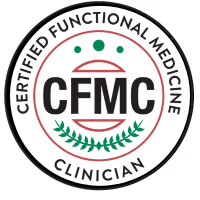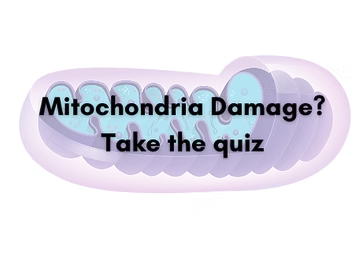Fluoroquinolone Toxicity Syndrome: How Antibiotics Affect Mitochondria
Reclaim your health after antibiotic damage
Many people struggle with chronic health issues. That’s why we design personalized health programs—so you can finally restore your energy and vitality.
How Fluoroquinolones Affect Mitochondria and Your Health
In this blog post, I’ll break down the process of how and why fluoroquinolones kill both bacteria and mitochondria, as well as the implications for your body.
Additionally, I’ll explain the role of mitochondria in your body, their location, and why they are so important.
Living with the effects of antibiotic damage, can rob you of your vitality and your joy leaving you feeling overwhelmed and unheard
Antibiotics and Their Bacterial Targets
Fluoroquinolones are a class of antibiotics, and each class kills bacteria in a unique way. For instance, penicillin, which most people are familiar with, destroys the bacterial cell membrane, making it impossible for the bacteria to survive.
Over time, bacteria developed resistance to penicillin and other antibiotics. As a result, fluoroquinolones were created to combat these resistant bacteria by attacking their DNA. The fluoride in fluoroquinolone molecules enables this process, as it has an affinity for bacterial DNA.
Understanding DNA and Its Role in Cells
Every cell in your body, as well as every bacterium and mitochondrion, contains DNA. DNA informs the cell about its identity and function. Without DNA, cells start to malfunction and eventually die.
Fluoroquinolones latch onto the DNA and inhibit replication, which spells doom for the cell. To illustrate this, imagine making a thousand copies of an original photo, each with a slight degradation.
While you might not notice a difference between consecutive copies, comparing the original to the thousandth copy reveals a significant drop in quality. This is what happens to cells when there’s an issue with DNA replication.
Experience renewed energy in a sense of hope, as you embark on a personalized journey to recover the debilitating effects of antibiotic damage
Fluoroquinolones Can't Tell the Difference Between Bacteria and Mitochondria
Research indicates that mitochondria were once bacteria. At some point during evolution, bacteria within cells became beneficial to humans and eventually evolved into the mitochondria found in our cells today.
As you can imagine, this means bacteria and mitochondria still share many similarities.
They are the same size, reproduce in the same manner, and both have their own DNA arranged loosely within the cell membrane.
The Abundance of Mitochondria and Their Vulnerability
Thousands of mitochondria are present in each cell within the human body. Some organs, like the heart, contain even more of them, as they are always active and require more energy to function.
However, mitochondrial DNA is more exposed compared to the DNA inside a cell’s nucleus, which is tightly packed around histones and organized into chromosomes. In contrast, mitochondrial DNA floats freely within the mitochondria, making it less secure and more vulnerable.
And, as mentioned earlier, mitochondria bear a striking resemblance to bacteria.
The Function of Mitochondria and Their Vulnerability
Unfortunately, fluoroquinolones, which are designed to kill harmful bacteria and treat illnesses, can’t differentiate between harmful bacteria and your mitochondria. They attack mitochondrial DNA, inhibiting replication.
Without DNA, the mitochondria can’t perform their essential function: producing energy. ATP synthesis, or energy production, is the primary role of mitochondria. If your mitochondria are affected, it will impact energy production, which in turn affects the cell, then the organ, and ultimately, you.
Factors Damaging Mitochondria and Their Impact
There are several ways in which mitochondria can be damaged. Chronic inflammation, aging, or being “Floxed” are examples of factors that can harm your mitochondria. Additionally, damaged mitochondria can affect various cells throughout the body.
Nerve cells, for instance, rely on mitochondria to function. So do your small intestine and mucus membranes. Every cell in your body contains mitochondria – not just one or two, but hundreds to thousands.
Therefore, when you experience symptoms like leaky gut, dry mouth, or neuroinflammation, it could be due to mitochondrial damage.
Fluoroquinolones Affect You on a Cellular Level
The purpose of this blog post is to emphasize that when you take fluoroquinolones, they profoundly impact your body at the cellular level.
The mitochondria, which produce energy for your cells, and their DNA are being damaged or destroyed. These medications are highly absorbable and can easily penetrate the membranes of our cells and the membranes of our mitochondria.
Years of Experience
Meet Dr. Hugh Wegwerth DC
I know how draining life can feel after fluoroquinolone toxicity—the fatigue, pain, and brain fog that others often dismiss. For over 26 years, I’ve used Functional Medicine with advanced lab testing to uncover the hidden causes and support true healing, rather than just covering symptoms.

Certified Functional Medicine Clinician

Trustindex verifies that the original source of the review is Google. I spent 10 years trapped in excruciating pain and fatigue after a severe reaction to the antibiotic Levaquin—ruptured Achilles tendons, constant inflammation, and even the lightest touch of fabric felt crushing. A simple cotton button-up shirt felt like a weighted vest that left me breathless, and the shoulder harness of a seat belt was unbearable. Multiple specialists dismissed me or offered quick-fix pills that only made things worse. Then I found Dr. Hugh Wegwerth. From our first call, Dr. Hugh listened, tested, and built a slow, step-by-step plan I could trust. His “Magic Trio” of magnesium glycinate, high-quality fish oil, and caprylic acid stopped the relentless foot-sweating and healed open wounds within a month. Layered with targeted supplements, neurological exercises, and an anti-inflammatory diet (coached at my pace, never pressured), the improvements snowballed: Pain down 95 %—I bend, lift, and wear most of my wardrobe again. Clothing tolerance back—that same cotton shirt no longer steals my breath, and I can buckle up without holding the seat belt away from my body. Energy up—running after my backyard chickens no longer floors me for days. Regular periods for the first time in 20 + years—I’m completely off birth control. Hiking 2–3 times a week and even doing jumping exercises that were unthinkable before. Driving freedom—short rides that once left me exhausted are now two-hour traffic trips without suffering. Confidence returned—friends and family notice my clear skin, bright eyes, and genuine smile. I’m not perfect yet—I still watch my diet closely and stay disciplined with Dr. Hugh’s routine—but the results are 100 % worth it. His patience, empathy, and deep functional-medicine knowledge turned a decade of hopelessness into real, measurable progress. If you’ve been “floxed” or are battling a chronic mystery illness, don’t give up—call Dr. Hugh. I only wish I’d found him soonerPosted onTrustindex verifies that the original source of the review is Google. So grateful for Dr. Hugh!!!! He has helped me recover from being floxxed when no other doctor knew what to do. Almost 100% recovered and I finally have my life back 🙏Posted onTrustindex verifies that the original source of the review is Google. ⭐️⭐️⭐️⭐️⭐️ Dr. Hugh Wegwerth is very kind and listens to you. He takes the time to really understand your health and doesn’t just give you a quick fix. He helps you find the root cause of your problem and gives advice that works. I recommend Dr. Wegwerth to anyone who wants a real answer to their health problems!Posted onTrustindex verifies that the original source of the review is Google. My names Luke, Dr Hugh Wegwerth not only has a ton of knowledge but has helped me tremendously. He understands biology/biochemistry which is critical for healing from cipro damage. Thank you for your help.Posted onTrustindex verifies that the original source of the review is Google. Dr.Hugh helped me improve my blood pressure by making a simple but overlooked suggestion to my current protocol. He also gave me a much needed reality check that renewed my commitment to do the exercises for dysautonomia. It’s very evident that he cares about his clients and gives 100% to help improve your situation. Thanks Dr. Hugh!Posted onTrustindex verifies that the original source of the review is Google. I'm incredibly grateful to Dr. Hugh for his help after I was damaged by fluoroquinolones. I've been working with him for a few weeks, following his protocols, including a carnivore diet, using the machine, and taking the recommended minerals. The improvement has been remarkable! My joint pain, especially in my Achilles tendon, has significantly reduced, and I'm experiencing fewer muscle cramps and twitches. I also noticed a big improvement in my circulation. I used to wake up with my arms feeling numb, but that issue has completely disappeared. My digestion has also become more regular, which is a huge relief. Dr. Hugh has been amazing in helping me on my road to recovery. Highly recommend him to anyone dealing with similar issues!Posted onTrustindex verifies that the original source of the review is Google. I watched Dr Hugh for 3 years before I actually called for an appointment. I have RA and fibromyalgia, but the final straw was Long Covid. He gave me insight into things I had no idea we’re wrong in my life and helped me correct my habits. Thank you for your service Dr Hugh!Posted onTrustindex verifies that the original source of the review is Google. Tremendous Improvement Under Dr. Hugh Wegwerth's Care I cannot express enough gratitude towards Dr. Hugh Wegwerth for the outstanding care and attention he has given to my case. His commitment and empathy have made a monumental difference in my health and overall well-being. The transformation in my mobility has been truly significant. I've noticed marked improvement in my walking, with my feet no longer shuffling but rather lifting off the floor. On better days, the necessity of a cane has become obsolete, which is an immense step forward. Moreover, the quality of my sleep has greatly improved under Dr. Wegwerth's care. The ensuing boost in my energy levels has made me feel more vibrant and alive than ever before. There's nothing quite like waking up refreshed and rejuvenated each morning. Another notable improvement has been in the condition of my skin. Thanks to Dr. Wegwerth's treatments, it's healthier, less itchy, and noticeably improved. This progress brings me immense joy and contributes to my overall happiness. Interestingly, I've found myself able to stay up later, needing less sleep than before. This, combined with the decrease in my night sweats, has significantly improved my daily living. Even issues with my previously cold hands and feet have shown about a 20% improvement, which is truly comforting. For anyone out there grappling with similar health issues, I wholeheartedly recommend Dr. Hugh Wegwerth. His professional expertise, combined with genuine care and concern, has profoundly enhanced my life. A heartfelt thank you to Dr. Wegwerth for all the positive changes he has inspired in my life.Posted onTrustindex verifies that the original source of the review is Google. In Oct. of 2021, I was floxed with Levaquin and Dexamethozone. And went on a HORRIBLE journey of psychosis and hospitals. My husband is a researcher and found Dr. Wegwerth online and we started watching his videos and it all made sense. I finally started working with him in October of 2022 and as of today I am MUCH better. He got my husband and I started on a path to health like never before. We have since been able to find a wellness doctor in our hometown that is helping us with nutrients and Ozone Treatment. We would not have got going without the boost from Dr. Wegwerth and his extensive testing and advice. We have both lost weight and generally overall just feel better. You won't regret working with Dr. Wegwerth. Thank you again Dr. Hugh!!Posted onTrustindex verifies that the original source of the review is Google. Gets to the root cause and teaches you how to get better. Great use of extensive lab testing and deep knowledge of human nutrition and biochemistry. Helped my husband after flouroquinolone toxicity in days after doctors failed for months. Thank you, Dr. Hugh!!Posted on
Ready to get help?
Our Simple, Proven Healing Process
1
Book Appointment
Discover how we can help you heal.
2
Receive Your Customized Plan
Get a tailored approach to your healing.
3
Start Your Healing Journey
Experience ongoing support and relief.
Frequently Asked Questions
What is Fluoroquinolone Toxicity Syndrome?
Fluoroquinolone Toxicity Syndrome, often called being “floxed,” happens when fluoroquinolone antibiotics damage mitochondria in addition to killing bacteria. This damage can cause long-lasting fatigue, pain, and neurological symptoms.
How do fluoroquinolones damage mitochondria?
- Fluoroquinolones bind to DNA to stop bacterial replication. Because mitochondria have bacterial-like DNA, these antibiotics can also interfere with mitochondrial replication, lowering cellular energy production.
What symptoms can mitochondrial damage from antibiotics cause?
- Common symptoms include chronic fatigue, muscle weakness, nerve pain, digestive problems like leaky gut, and brain fog. These issues result from reduced ATP energy production at the cellular level.
Can people recover from fluoroquinolone toxicity?
- Yes. While recovery can take time, many people improve with functional medicine approaches that support mitochondria, reduce inflammation, and restore gut health.
Will this be a video call or audio only?
The call is set up as a video call, but if you’d rather keep your camera off and use audio only, that’s fine.

